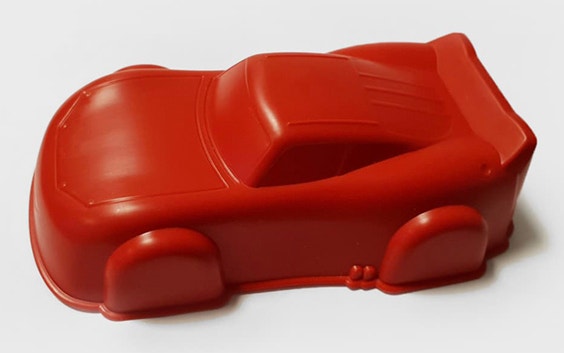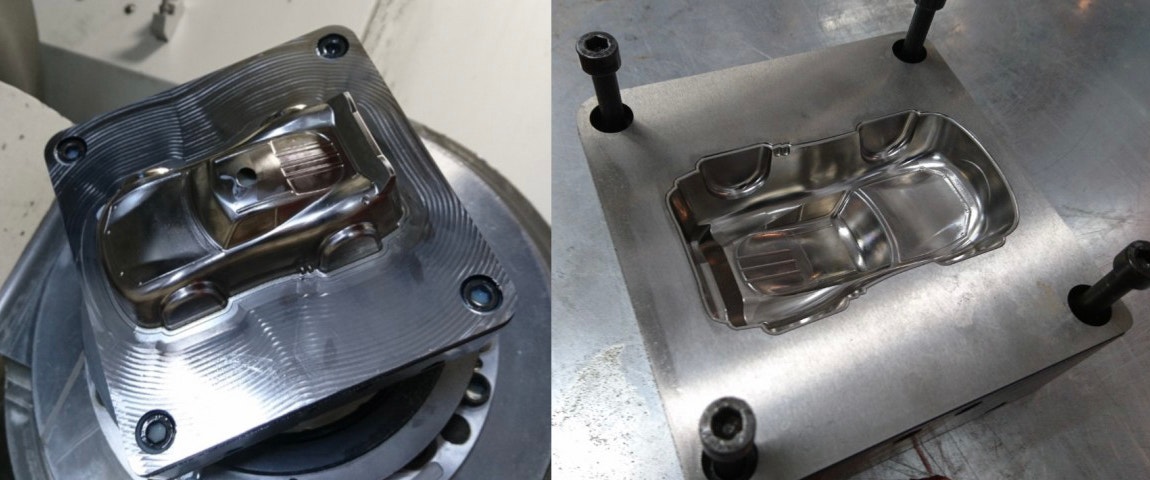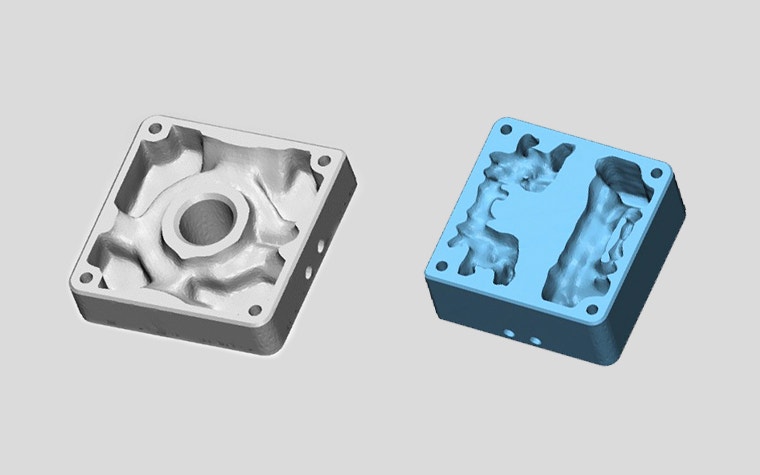CASE STUDY
Lattice Structures Enable Optimized Tooling Design for Smoby Toys

To produce miniature versions of the Lightning McQueen car, IPC decided to 3D print a metal mold that would perform better than ever before thanks to cooling channels that follow the exact shape of the car.
Who hasn’t heard of or seen the movie Cars? Anyone with children will be familiar with the different characters in the movie and maybe you even have a car toy at home. Smoby, the number one toy manufacturer in France, makes children’s dreams come true by offering buckets, backpacks and other items featuring Lightning McQueen. Some of their toys are produced by IPC, a research center with significant expertise in 3D printing technology. To produce miniature versions of the Lightning McQueen car, IPC decided to print a metal mold that would perform better than ever before thanks to cooling channels that follow the exact shape of the car.

Metal 3D-printed mold of the Lightning McQueen toy car. Image courtesy of IPC.
Bundling design and simulation expertise to speed up production
Constructing molds in the conventional way has the disadvantage of being time-consuming. And when creating small series, the costs are proportionally high. For their customer Smoby Toys, IPC went the extra mile by collaborating with Materialise to create molds that are lighter in weight. The molds also cool down faster due to conformal cooling channels 3D-printed in the molds.
“For IPC, the main advantage of using metal additive manufacturing to produce tools for plastic injection molding is the possibility to create conformal cooling channels. These allow IPC to reduce the production cycle time and improve the part quality.”
— Jean-Christophe Bornéat, Project Manager at IPC
If the car had been cooled down by straight cooling channels, parts closer to the channel would cool down faster and it would take longer for the entire car to be cooled down. In addition, the risk of distortion would be higher. Using conformal cooling channels instead, IPC could speed up the cooling process.


IPC decided to replace certain solid parts of the car mold with a lightweight structure. So first the topology of the mold was optimized with Altair software keeping in mind the pressure on the open surface. Our design and engineering team then inserted these results in Materialise 3-matic software for smoothing the surface, removing all artifacts and obtaining a 3D model ready for printing.
Then, the objective was to populate the open space with a lattice structure, taking into account all specifications for Metal 3D Printing. Our design and engineering team designed lightweight beams using Materialise 3-matic software and performed a surface remesh to make the 3D model ready for FEA processing. IPC then put their specialized simulation expertise into the job. They simulated the heat and strength of the 3D model and based on that info, our design team optimized the build parameters of the lattice.
Now that the beams had the right thickness and the heat distribution was in balance, the mold was ready to be printed, right?


Not yet. The mold resulted in a heavy file that would take hours to slice at an accurate level. With the slice-based operations technology of the Build Processor software, it was possible to avoid the STL file stage and only apply the 3D geometry at the slice level. The information about structures and textures is saved as metadata. The corresponding STL file would have been at least 1,000 to 10,000 times larger than the file with metadata. The car mold could have never been sliced at such an accurate level without this technology.


Reducing the production cycle by 50%
The creation of the car toy was the result of the great collaboration between IPC and Materialise. Their expertise in FEA met our expertise in post-topology optimization and lattice design. By using Metal 3D printing, the production cycle of the toy could be reduced by 50%. The lattice structure led to a material reduction of 12% for the upper part and 24% for the lower part. In addition, a lattice structure increases scanning speed and the lighter weight of the mold allows to produce parts with larger dimensions.
“Materialise 3-matic software helps us to replace bulk material with optimized lattice structures. This replacement reduces the global volume of the mold and so reduces the AM production time, the cost and the residual stresses on the part. These improvements will allow IPC to create larger molds with better return on investment.”
— Jean-Christophe Bornéat, Project Manager at IPC
On top of all these production benefits, IPC’s mold resulted in these amazing car toys. Admire their perfection in any Smoby shop!
Share on:
This case study in a few words
Consumer goods
Machinery and equipment
Materialise 3‑matic
Materialise Build Processor
Speeding up the production cycle of Smoby’s toys
Reduce material usage by an average of 18%
Production cycle shortened by 50%
